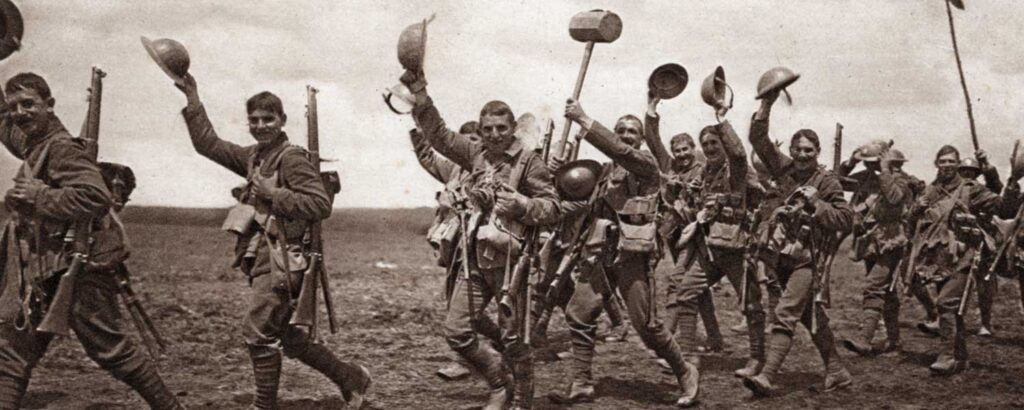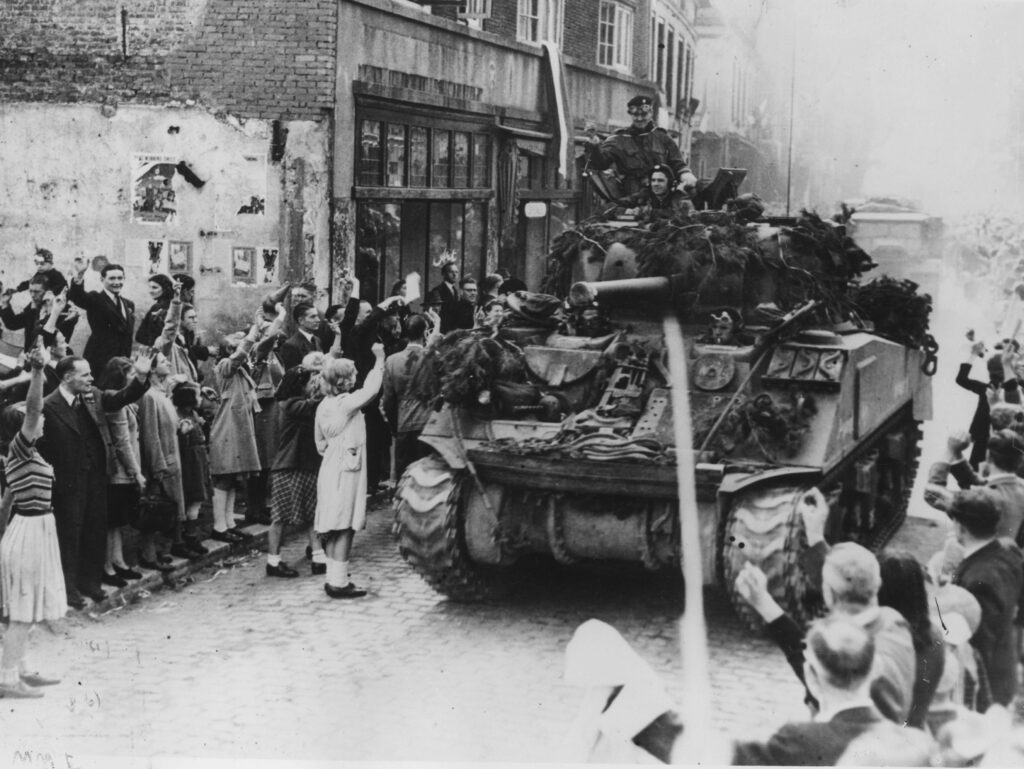Tracing your ancestor’s military service can be a deeply rewarding and meaningful journey. It allows you to connect with your family history, gain a deeper understanding of their experiences, and honour their sacrifices. Whether you’re just beginning your genealogy research or have hit a roadblock in your family tree, this blog will provide you with valuable insights and resources to uncover your ancestor’s military service.
Why Tracing Your Ancestor’s Military Service is Important
Understanding your ancestor’s military service goes beyond mere curiosity; it allows you to connect with your family’s history on a deeper level. By learning about their sacrifices, challenges, and triumphs, you gain appreciation for their contributions to your country and the world. Additionally, tracing military service can provide crucial details for genealogical research, filling gaps in your family tree and shedding light on previously unknown relatives. It also allows you to discover connections to historical events or significant military campaigns, giving you a broader understanding of the context in which your ancestors lived.

Where to Start?
When it comes to tracing your ancestor’s military service, military records are an invaluable resource. These records contain a wealth of information, including enlistment dates, ranks, units, and even personal details such as birthplaces and next of kin. To begin your research, start by gathering any existing family documents, such as discharge papers, photographs, or heirlooms, that may provide clues. These can serve as valuable starting points for further investigation.
Sometimes, the most valuable insights come from family stories and artefacts. Oral traditions passed down through generations can provide crucial information about where and when your ancestors served, as well as their experiences on the battlefield.
Take the time to interview older family members and record their stories. Ask about any military-related items they may have, such as uniforms, medals, or letters. These items can offer unique glimpses into your ancestor’s military service and provide tangible connections to the past.
Types of Military Records to Look For
When researching your ancestor’s military service, there are several types of records to look for. Service records, also known as personnel files, provide detailed information about an individual’s military career. They often contain enlistment forms, discharge papers, and correspondence.
Pension records are another valuable resource. These documents were often granted to veterans or their families and can provide valuable insights into the soldier’s life after service, including medical records, disability claims, and financial support.
Muster rolls, payrolls, and rosters are also worth exploring. These records list the names of individuals who served in specific units and can help you track your ancestor’s movements and assignments.
Online Resources
In the digital age, the internet has become a treasure trove of resources for tracing your ancestor’s military service. Numerous websites offer access to military records with powerful search tools to efficiently search by name, unit, or location. Some key websites to utilise are:
- Ancestry
- Findmypast
- Fold3
- FamilySearch
- The National Archives
- Commonwealth War Graves Commission (CWGC)
- Online Genealogy Communities
These sites have extensive collections of military records, including service records, medal rolls, enlistment registers pension applications, digitised war diaries, and more. Some platforms may require a subscription or payment, but they offer a wealth of information and are well worth the investment. These resources can be particularly useful for finding information about soldiers who fought in specific conflicts or those who made the ultimate sacrifice.
Additionally, many military organisations and veterans’ associations have digitised their historical records and made them accessible online. These resources can provide unique insights and enhance your research.

How To Utilise Online Resources
Websites like Ancestry and Findmypast allow you to build your family tree and attach relevant records to individual profiles. This integration makes it easier to visualise your ancestor’s military service in the context of your broader family history. Additionally, these websites often provide hints and suggestions based on your existing family tree, helping you discover records you may have overlooked.
Another useful feature offered by genealogy websites is access to user-contributed family trees. These trees may contain information about your ancestors, shared by other researchers who have uncovered relevant records. Collaborating with fellow genealogists can greatly enhance your research efforts and may lead to exciting discoveries. However, always verify the information you find in these trees through primary resources to ensure accuracy.
Be sure to explore the website’s other features, such as community forums and message boards. These platforms allow you to connect with other genealogists who may have valuable insights or resources to share.
Local Resources for Tracing Military Service
While online resources are convenient and accessible, don’t overlook the value of local resources for tracing your ancestor’s military service. Check out:
- Local Libraries
- Historical Societies
- Genealogical Societies
- Local Museums
- Historical Sites
These organisations often have collections of records specific to their region. Visit these institutions in person or reach out to their staff via email or phone. They can provide guidance on available resources, offer research assistance, and connect you with fellow researchers who may have a shared interest in military genealogy. Exploring these resources can provide a broader understanding of the historical context in which your ancestors served.
Understanding Military Abbreviations and Terminology
Military records are often filled with abbreviations and terminology that can be confusing to decipher. Here are some common ones and their meanings:
- KIA = Killed in Action
- POW = Prisoner of War
- AWOL = Absent Without Leave
- Co. = Company
- Sgt. = Sergeant
- Pvt. = Private
- Gen. = General
- Med. = Medical
These are just a few examples, and there are many more abbreviations. Be sure to consult reference guides and online resources for comprehensive list.

Some of our Research Tips
Interpreting military records can be a daunting task, especially for those unfamiliar with the terminology and abbreviations. Here are a few tips to help you make sense of these documents, coming from our very own research team:
- Consider the historical context in which your ancestors served. Understanding the wars, battles, and campaigns they were involved in can provide insights into their experiences and the significance of their service.
- To ensure accuracy and fill in any gaps, cross-reference information from different records and sources. This will help you paint a more complete picture of your ancestor’s life.
- If you’ve got a meal family member in the 1911 census but not the 1921 census, there’s a good chance he died in World War 1 (also take note of female family members remarrying in the 1920s or late 1940s as it could be a sign they are war widows).
- Be aware only about a third of World War 1 service records are still in existence, the rest were either wholly or partially destroyed in The Blitz. Those which are remaining are known as the ‘Burnt Records’ and are stored in The National Archives.
- If a record has survived, don’t just rely on the transcription, have a read of all the images. Next of kin will almost always be named with an address and if the soldier is married/has children, these may be listed with exact dates of birth.
- Deaths in the wars are not found on the General Register Office (GRO) so if you can’t find a death record for someone, and they’re roughly the right age to have served, check the aforementioned CWGC.
Honouring Your Ancestors
Tracing your ancestor’s military service can be a rewarding and enlightening endeavour. By following the steps outlined in this blog and utilising the resources available, you can uncover the stories of those who came before you and gain a deeper understanding of your family’s history. Remember, it’s not just about finding names and dates; it’s about honouring the sacrifices and contributions of those who served. Whether you uncover tales of heroism or stories of everyday resilience, each discovery adds a new chapter to your family’s narrative, ensuring that their legacy lives on.
If you have found this guide helpful, consider sharing it with others who may be interested in tracing their ancestor’s military service. Together, we can preserve and honour the memory of those who served. Don’t forget, if you need a helping hand, don’t hesitate to contact us!


